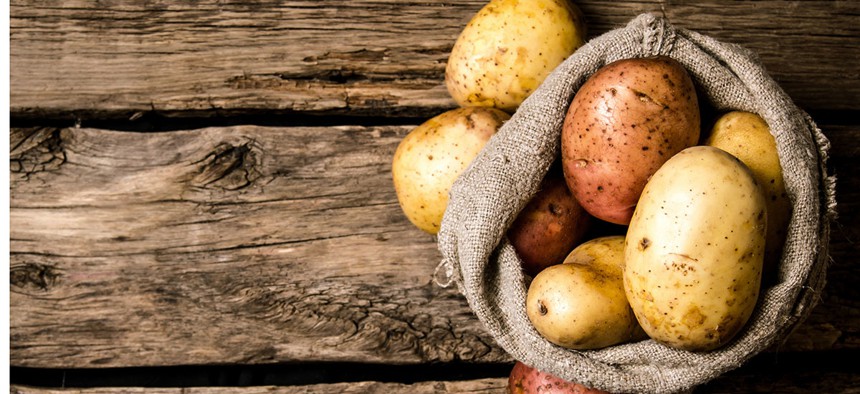The Key to Life on Mars Could Be an Institution Dedicated to Global Potato Research

Artem Shadrin/Shutterstock.com
Before it can send astronauts to Mars, NASA needs to figure out how to feed them there.
Before it can send astronauts to Mars, NASA needs to figure out how to feed them there. To work that out, the space agency teamed up with a research group in Peru focused exclusively on spud research.
The International Potato Center (known by its Spanish acronym, CIP), is dedicated to understanding how tubers like potatoes can grow and eventually feed everyone here on Earth—but also potentially space travelers to Mars. Last week, CIP announced that after a year, it had been able to successfully grow potatoes in a plot of land engineered to mimic Mars’ harsh environment.
“We want to know what the minimum conditions are that a potato needs to survive,” said Julio Valdivia-Silva, a University of Engineering and Technology-Lima engineer who worked on the “Potatoes on Mars” project.
On Earth, the land where we grow crops typically contains nutrient-rich soil, long periods of sunlight and warmth and a carbon-dioxide rich atmosphere. Provided plants get water, crops have everything they need to grow. But on Mars, soil is salty, loose, and lacking chemicals like nitrogen, which plants need to grow. Although it can get to a balmy 70°F (21°C) near the Martian equator in the summer, the average temperature is around -80°F.
In February 2016, engineers created a small plot of land imitating a version of Martian climate where plants could possibly grow. They used soil from the Pampas de La Joya desert in Peru—similar to Martian soil because it is home to very little life and few organic compounds. They also created atmospheric conditions similar to Mars: cold with low pressure and very little carbon dioxide and oxygen. The tiny crop, just a few square feet in area, was monitored 24 hours a day (which you can still watch here as researchers follow up on the plants’ progress).
Researchers planted seeds for potatoes that had been bred to withstand salty soil and gave them water that had been fortified with extra plant nutrients. After a year, the team reported they had successfully grown a small crop of potatoes—meaning they could probably grow on Mars, too.
The group hasn’t published these findings in a peer-reviewed journal yet, and they only prove it’s likely possible for potatoes to survive in Martian conditions. Fine-tuning logistics, like figuring out how to bring the seeds, water and plant nutrients to our neighboring planet is something else entirely.
Mars may not be realistic. But growing potatoes in these conditions shows there is hope we’ll be able to grow crops in harsh Earth environment that will eventually be created by climate change.
“How better to learn about climate change than by growing crops on a planet that died two billion years ago?” Joel Ranck, the director of communications at CIP, said in a press statement last year. “We need people to understand that if we can grow potatoes in extreme conditions like those on Mars, we can save lives on Earth.”





